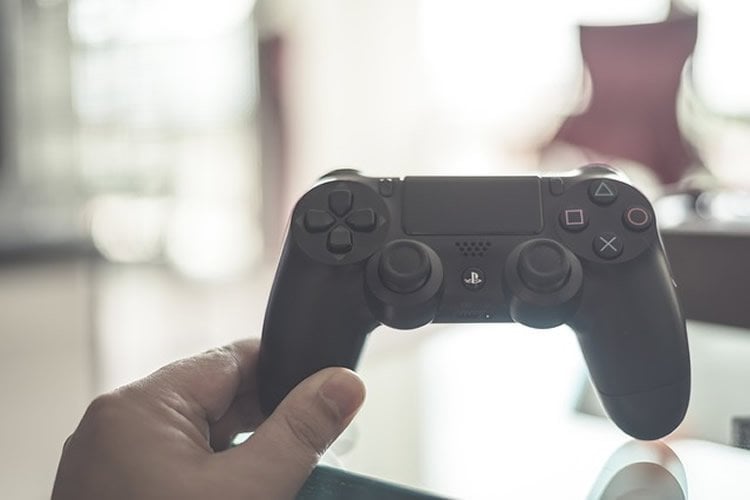Summary: Study reports physicians should treat eSports players as athletes and provide appropriate levels of preventative care, as well as treatment for injuries associated with playing computer games.
Source: New York Institute of Technology.
With more than 80 US colleges offering varsity eSport teams, physicians writing in the British Journal of Medicine say collegiate players should be treated as athletes, with an appropriate level of medical care to promote continuing health.
Osteopathic sports medicine physicians at New York Institute of Technology College of Osteopathic Medicine surveyed 65 collegiate varsity eSport players from nine American universities, finding that the players’ training schedules averaged five to 10 hours per day, with many players reporting physical injuries.
The most common reported complaint was eye fatigue (56 percent), followed by neck and back pain (42 percent), wrist pain (36 percent), and hand pain (32 percent). Only two percent of those who suffered an ailment sought medical attention.
“When we think of an eSport player, we don’t typically think he or she needs a physician’s clearance to participate in a sedentary activity with little chance of injury,” says Hallie Zwibel, DO, director of sports medicine at New York Institute of Technology College of Osteopathic Medicine, who also oversees NYIT’s Center for eSports Medicine, and is a co-author on this study. “Quite contrary to that belief, these athletes suffer health concerns and chronic overuse injuries–some of which are career ending. It’s time we begin to proactively manage these issues.”
Causes of injury
eSport requires players to focus on LED computer monitors for long periods of time. Recent research has demonstrated that excessive exposure to LED light can damage retinas and disrupt melatonin levels and natural circadian rhythm. As a result, players often experience eye strain and impaired sleep patterns.
Given the necessity of being seated for hours on end, posture is also negatively affected in eSport gamers, resulting in neck and back pain. In addition, the survey found 40 percent of players get no physical activity, furthering susceptibility to injury due to weakened musculature.
The high number of hours dedicated to practice could easily cause overuse injuries, and that risk is compounded by the intensity of game play. The average novice players make approximately 50 action moves per minute. However, higher level players make 500-600 action moves per minute–or about 10 moves per second.

In addition to overuse injuries, there are mental health issues related to eSports, including addictive behavior, personal hygiene issues, social anxiety, and sleep disturbances.
Catching up
Colleges, universities, and high schools are adding eSport teams at a rapid pace. In the US, There are more than 50 colleges with varsity eSport teams under the National Association of Collegiate eSports, and 22 colleges in the US currently offer scholarships for gaming. The NCAA is currently investigating whether to recognize eSport.
Researchers say schools need to also provide the same level of preventive training and care and injury treatment expected for traditional athletes. Dr. Zwibel says college eSport teams require the support of multidisciplinary medical staff who can identify and address social or addictive behaviors, like changes in academic or work performance, and chronic eSport gaming injuries, such as wrist or hand problems, eye strain and postural assessments.
“The common concerns and injuries that are seen in eSport athletes are not the typical injuries seen in traditional student athletes,” says Dr. Zwibel. “Many physicians and athletic trainers may not identify these injuries because eSports are relatively new and the health consequences are emerging as these teams become more common.”
Source: Jeff Brennan – New York Institute of Technology
Publisher: Organized by NeuroscienceNews.com.
Image Source: NeuroscienceNews.com image is in the public domain.
Original Research: Abstract for “Managing the health of the eSport athlete: an integrated health management mode” by Joanne DiFrancisco-Donoghue, Jerry Balentine, Gordon Schmidt, and Hallie Zwibel in British Medical Journal Open. Published January 21 2019.
doi:10.1136/bmjsem-2018-000467
[cbtabs][cbtab title=”MLA”]New York Institute of Technology”Should Physicians Treat eSports Players as College Athletes?.” NeuroscienceNews. NeuroscienceNews, 22 January 2019.
<https://neurosciencenews.com/esports-athletes-10618/>.[/cbtab][cbtab title=”APA”]New York Institute of Technology(2019, January 22). Should Physicians Treat eSports Players as College Athletes?. NeuroscienceNews. Retrieved January 22, 2019 from https://neurosciencenews.com/esports-athletes-10618/[/cbtab][cbtab title=”Chicago”]New York Institute of Technology”Should Physicians Treat eSports Players as College Athletes?.” https://neurosciencenews.com/esports-athletes-10618/ (accessed January 22, 2019).[/cbtab][/cbtabs]
Abstract
Managing the health of the eSport athlete: an integrated health management mode
Objectives
eSport is a form of electronic gaming, also known as professional or competitive video gaming, and is growing at a rapid pace worldwide. Over 50 US colleges have established varsity gaming teams over the past three years; some colleges offer eSport scholarships as they do for traditional sports. There is little objective research on the health habits of these players who are often placed under the direction of the athletics department on college campuses, and there is currently no health management model on how to treat these new athletes.
Methods
Anonymous electronic surveys were sent to 65 collegiate eSport players from nine universities across the USA and Canada inquiring about gaming and lifestyle habits, and musculoskeletal complaints due to eSport competition.
Results
Players practiced between 3 and 10 hours per day. The most frequently reported complaint was eye fatigue (56%), followed by neck and back pain (42%). eSport athletes reported wrist pain (36%) and hand pain (32%). Forty per cent of participants do not participate in any form of physical exercise. Among the players surveyed, only 2% had sought medical attention.
Conclusion
eSport players, just like athletes in traditional sports, are susceptible to overuse injuries. The most common complaint was eye fatigue, followed by neck and back pain. This study shows eSport athletes are also prone to wrist and hand pain. This paper proposes a health management model that offers a comprehensive medical team approach to prevent and treat eSport athletes.






